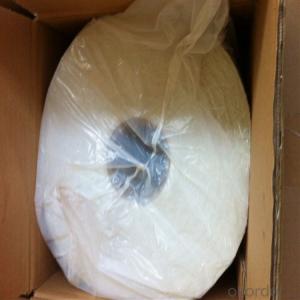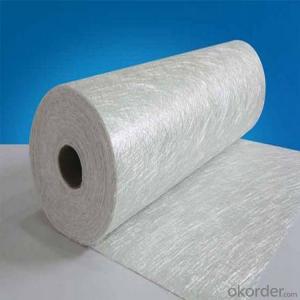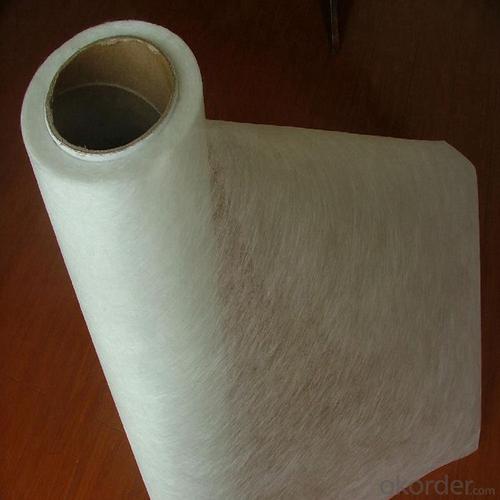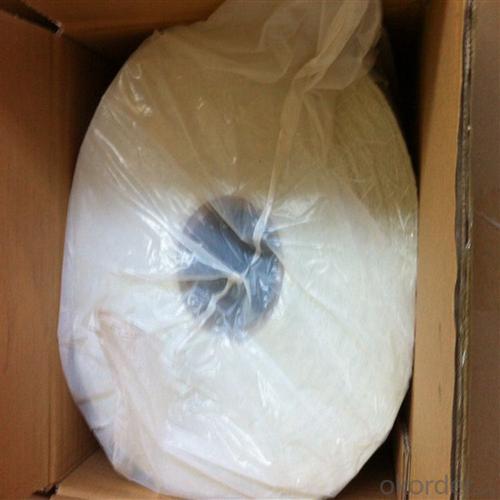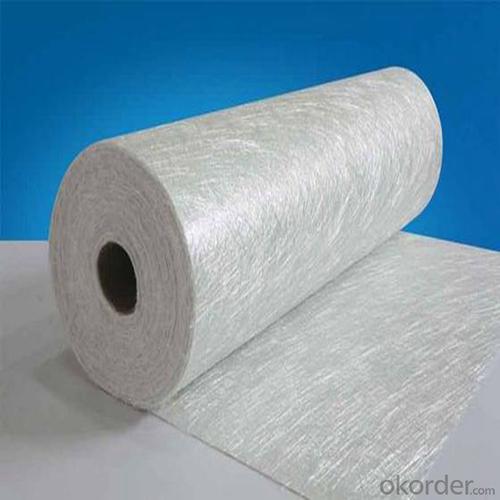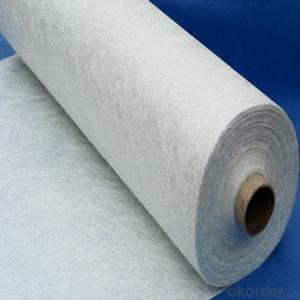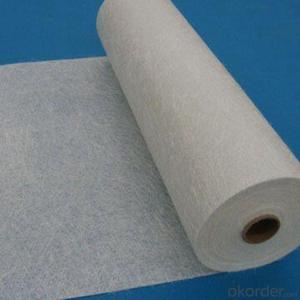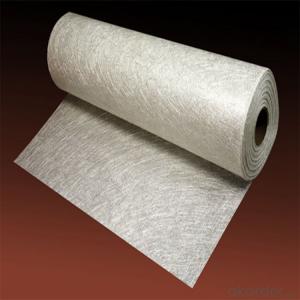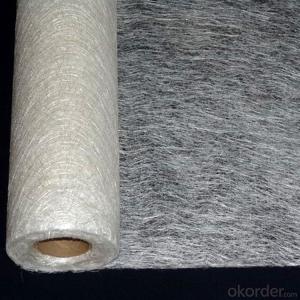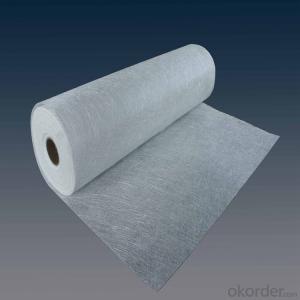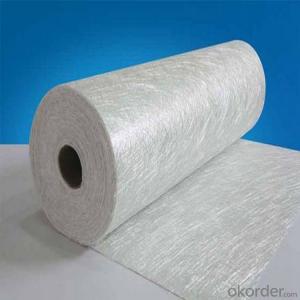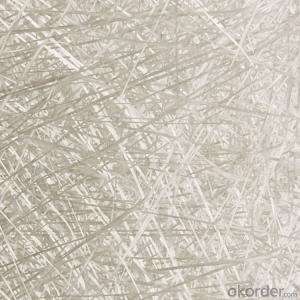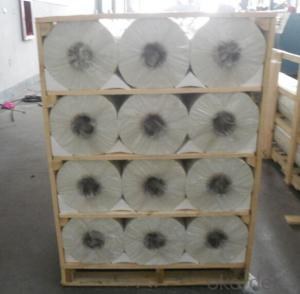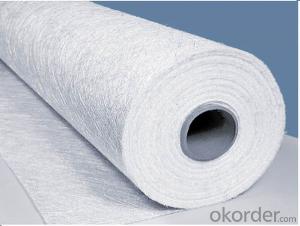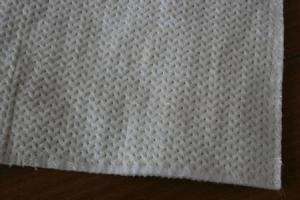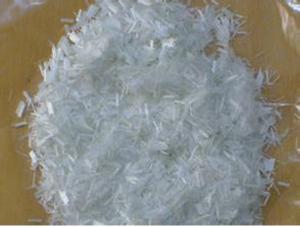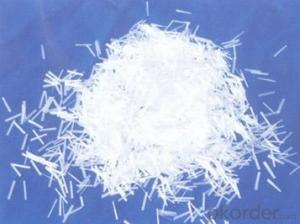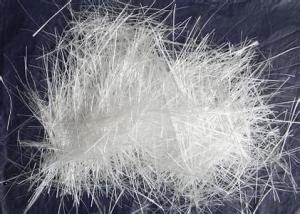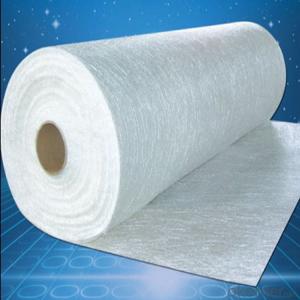Fiberglass 1.5oz X 50 Chopped Strand Mat for Roof Translucent Clear Panel Sheet FRP Panel
- Loading Port:
- China main port
- Payment Terms:
- TT OR LC
- Min Order Qty:
- 50 kg
- Supply Capability:
- 10000 kg/month
OKorder Service Pledge
OKorder Financial Service
You Might Also Like
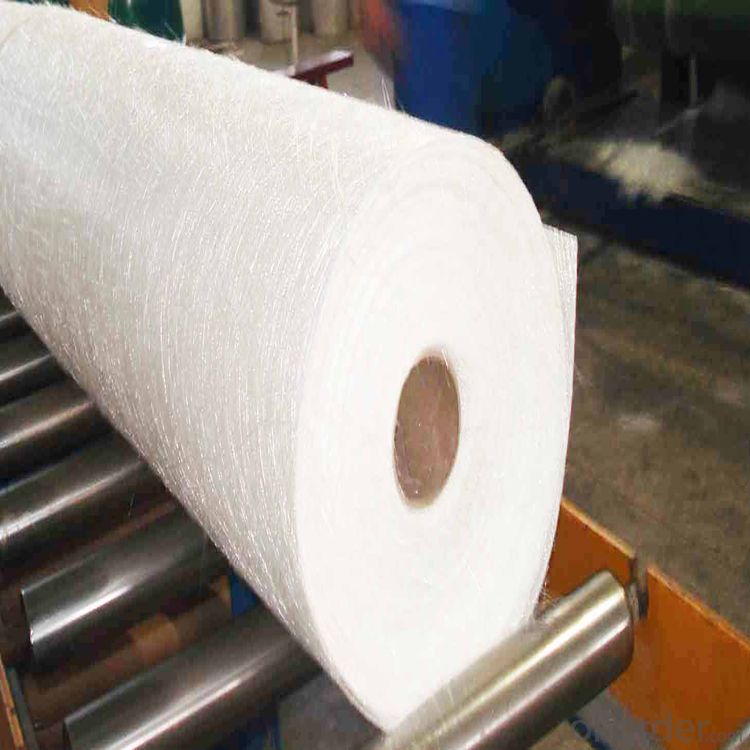
Product Description:
Chopped strand mat is made from chopped glass fibers, which are bonded with powder or emulsion binders. It can be used in hand lay-up process and continuous laminating process to produce FRP products, such as plates, lighting board, hull, bathtub, cooling towers, anti-corrosion materials, vehicles.
Features:
Uniform thickness, softness and hardness good.
Good compatibility with resin, easy completely wet-out.
Fast and consistent wet-out speed in resins and good manufacturability.
Good mechanical properties, easy cutting.
Good cover mold, suitable for modeling complex shapes.
Application:
fiberglass thickness is suitable for application by hand lay-up, reinforce and machine FRP molding,
including interior decoration of vehicles, boat hulls, complete set of sanitary equipment, anticorrosive pipes, tanks, building materials, tables, chairs, panels and all kind of composite FRP products.
Specifications:
Item | Over Density | Moisture Content | Chop Density | Polyester Yarn | Width |
(g/m2) | (%) | (g/m2) | (g/m2) | (mm) | |
EMK300 | 309.5 | ≤0.15 | 300 | 9.5 | 50-3300 |
EMK380 | 399 | 380 | 19 | ||
EMK450 | 459.5 | 450 | 9.5 | ||
EMK450 | 469 | 450 | 19 | ||
EMC0020 | 620.9 | 601.9 | 19 | ||
EMC0030 | 909.5 | 900 | 9.5 |
Special products are available according to customer’s requirement.
Product Packaging:
Each Surface Tissue is wound onto a paper tube which has an inside diameter of 76mm and the mat roll has a diameter of 330mm. The mat roll is wrapped up with plastic film,and then packed in a cardboard box or wrapped up with kraft paper. The rolls can be vertically or horizontally placed. For transportation, the rolls can be loaded into a cantainer directly or on pallets.

Product Storage:
Unless otherwise specified, Chopped Strand Mat should be stored in a dry, cool and rain-proof area. It is recommended that the room temperature and humidity should be always maintained at 15℃~35℃ and 50%~75% respectively.
Company Information
CNBM (China National Building Material) Group is the largest comprehensive building materials group in China that in integrate scientific research, manufacturing and logistics into one entity. The largest building materials and equipment specialists in China. Upon State Council approval, today CNBM owned more than 300 subordinate manufacturing factories and servicing companies. There are 6 fully owned public listed companies and 11 partially owned with substantial shares public listed companies. In many of these fields, CNBM is playing the leading role in the building industry in the country.
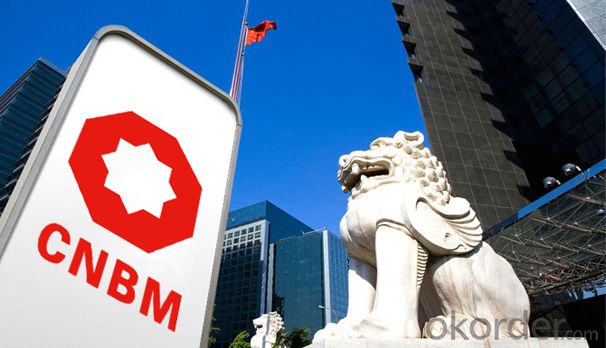
Order Information
Ordering please specify:
1. the product code, 2. weight, 3. width, 4. order quantity, 5. packaging, 6. special requirements please specify.
FAQ:
1. How long will you get reply?
Any inquiry will be replied within 24 hours. Usually we will reply within 12 hours.
2. How long is warranty period?
We provide 3 year warranty period.
3. What is your MOQ?
Any order quantity is available.
4. Can you provide sample?
Yes, samples are in stock. we can offer free sample for you.
5. Payment terms?
We can accept L/C, T/T, Western Union, Paypal etc.
6. Do you offer OEM service?
Yes, we can print customers’ logo on the packaging;
And the size and specification can be produced and design according to your demand.
7. What is the Production Lead Time?
15-20 days for bulk production after confirm the order.
- Q: How does the fiber orientation affect the properties of fiberglass chopped strand?
- The fiber orientation greatly affects the properties of fiberglass chopped strand. The orientation determines the strength, stiffness, and overall mechanical properties of the material. Fibers aligned in the same direction provide high strength and stiffness along that axis, while randomly oriented fibers offer isotropic properties. Additionally, the orientation affects the material's resistance to delamination, impact resistance, and dimensional stability. Therefore, controlling the fiber orientation is crucial in optimizing the specific properties required for various applications.
- Q: Can fiberglass chopped strand be used in acoustic insulation applications?
- Certainly! Acoustic insulation applications can indeed utilize fiberglass chopped strand. Renowned for its superb sound absorption qualities, fiberglass proves itself as the perfect substance for diminishing noise and enhancing acoustics across diverse contexts. When in the form of chopped strands, fiberglass effortlessly combines with other substances, like binders or resins, to fabricate insulation products that efficiently soak up and muffle sound waves. These products find frequent employment in structures, automobile applications, and other settings that prioritize noise reduction. All in all, fiberglass chopped strand emerges as a versatile and highly efficient material for acoustic insulation purposes.
- Q: How is the fiber distribution in fiberglass chopped strand ensured?
- The fiber distribution in fiberglass chopped strand is ensured through a manufacturing process known as pultrusion. In this process, the glass fibers are evenly dispersed and mixed with a liquid resin. The mixture is then pushed through a heated die, where it solidifies into the desired shape. The controlled flow and pressure during pultrusion help ensure that the fibers are evenly distributed throughout the fiberglass, resulting in a consistent and uniform product.
- Q: How is the fiber dispersion in the resin matrix ensured during manufacturing?
- The fiber dispersion in the resin matrix is ensured during manufacturing through various techniques such as mechanical mixing, vacuum-assisted resin infusion, and controlled application of pressure and temperature. These methods help to evenly distribute the fibers within the resin, ensuring a uniform and consistent composite material.
- Q: Can fiberglass chopped strand be used in the production of insulation foams?
- Yes, fiberglass chopped strand can be used in the production of insulation foams. Fiberglass is a commonly used material in insulation due to its excellent thermal performance and durability. Chopped strand is essentially small strands of fiberglass that are cut into shorter lengths. These chopped strands can be mixed with other materials, such as resins or foaming agents, to create insulation foams. The use of fiberglass chopped strand in insulation foams offers several benefits. First, fiberglass is a good insulator, which means it can effectively trap heat or cold and prevent it from escaping or entering a space. This property makes it ideal for use in insulation materials, where the goal is to regulate temperature and improve energy efficiency. Second, fiberglass chopped strand can enhance the structural integrity of insulation foams. By reinforcing the foam, the chopped strands can help improve its strength, durability, and resistance to deformation. This is particularly important in applications where the foam will be subject to mechanical stress or compression. Lastly, fiberglass chopped strand is relatively lightweight, making it suitable for use in lightweight insulation foams. This can be advantageous for applications where weight is a concern, such as in the automotive or aerospace industries. In conclusion, fiberglass chopped strand can be successfully used in the production of insulation foams. Its thermal insulating properties, reinforcing capabilities, and lightweight nature make it a valuable component in creating high-performance insulation materials.
- Q: Is fiberglass chopped strand compatible with phenolic resin?
- Yes, fiberglass chopped strand is compatible with phenolic resin. Phenolic resin is commonly used as a binder in fiberglass products, including chopped strand mats. The resin is able to wet out and bind to the fiberglass strands, creating a strong and durable composite material. The compatibility between fiberglass chopped strand and phenolic resin allows for the production of various fiberglass-reinforced products, such as panels, pipes, and automotive components.
- Q: Where can I cut short glass fiber?
- Let's talk about the concept, also called glass fiber short cut, or glass fiber segment, usually using a special soaking agent of the original silk, through wet short cut online.
- Q: Can fiberglass chopped strand be used in the production of wind turbine towers?
- Yes, fiberglass chopped strand can be used in the production of wind turbine towers. Fiberglass chopped strand is a type of reinforcement material that consists of short strands of fiberglass. It is commonly used in the manufacturing of composite materials, such as fiberglass-reinforced plastic (FRP) or fiber-reinforced polymer (FRP) composites. Wind turbine towers are often made of composite materials due to their lightweight and high strength-to-weight ratio characteristics. These materials provide the necessary stiffness and durability required to withstand the constant exposure to wind and other environmental conditions. Fiberglass chopped strand is an important component in the production of wind turbine towers as it helps to reinforce the composite material and enhance its overall structural integrity. The chopped strands are typically mixed with a resin matrix, such as epoxy or polyester, to create a strong and durable composite material. The fiberglass chopped strand provides additional strength and stiffness to the composite, allowing the wind turbine tower to withstand the forces exerted by strong winds and support the weight of the turbine blades. It also helps to prevent cracking or delamination of the composite material, ensuring the longevity and reliability of the wind turbine tower. In conclusion, fiberglass chopped strand is a suitable material for use in the production of wind turbine towers. Its reinforcing properties and compatibility with composite materials make it an ideal choice for creating strong and durable structures capable of withstanding the harsh conditions of wind turbine environments.
- Q: What are the advantages of using fiberglass chopped strand over other reinforcement materials?
- There are several advantages of using fiberglass chopped strand over other reinforcement materials. Firstly, fiberglass chopped strand offers excellent strength and durability. It has a high tensile strength, which means it can withstand heavy loads and stresses without breaking or deforming. This makes it an ideal choice for reinforcing various materials and structures, such as concrete, plastics, and composites. Secondly, fiberglass chopped strand is lightweight. Compared to other reinforcement materials like steel or aluminum, fiberglass is significantly lighter. This makes it easier to handle and transport, reducing labor costs and increasing overall efficiency. Additionally, fiberglass chopped strand is corrosion-resistant. Unlike metals such as steel, which can rust and deteriorate over time, fiberglass is not prone to corrosion. This makes it suitable for applications in harsh environments or where exposure to moisture, chemicals, or saltwater is common. Another advantage of fiberglass chopped strand is its electrical insulation properties. Fiberglass is a non-conductive material, meaning it does not conduct electricity. This makes it a preferred choice for applications where electrical insulation is crucial, such as electrical equipment, circuit boards, or insulation for wiring. Furthermore, fiberglass chopped strand is highly versatile. It can be easily molded and shaped to fit various forms and configurations, allowing for customized designs and applications. It also has excellent adhesion properties, enabling it to bond well with other materials, further enhancing its versatility. Lastly, fiberglass chopped strand is cost-effective. Compared to alternative reinforcement materials like carbon fiber, fiberglass is generally more affordable. This makes it a cost-effective choice for many industries and applications, without compromising on performance and reliability. In summary, fiberglass chopped strand offers numerous advantages over other reinforcement materials, including excellent strength, lightweight, corrosion resistance, electrical insulation, versatility, and cost-effectiveness. These qualities make it a preferred choice in various industries, ranging from construction and automotive to aerospace and electronics.
- Q: How is fiberglass chopped strand made?
- Fiberglass chopped strand is made through a manufacturing process that involves several steps. Firstly, glass fibers are melted at high temperatures in a furnace. These fibers are made from a combination of raw materials such as silica sand, limestone, soda ash, and other additives. Once melted, the molten glass is then extruded through tiny holes in a device known as a bushing. This process is called fiberization, and it results in the formation of numerous fine glass filaments. These filaments are then rapidly cooled with a blast of air or water, causing them to solidify into solid fibers. Next, the solid fibers are gathered into bundles known as strands. These strands are then chopped into shorter lengths using mechanical cutters, hence the term "chopped strand." The chopped strands are typically around 3-6mm in length, although this can vary depending on the desired application. After being chopped, the strands are collected and processed further. They may undergo additional treatments such as applying a sizing agent or a binder to enhance their performance and compatibility with specific resin systems. These treatments also help to improve the adhesion between the fiberglass and other materials it will be combined with, such as resins or polymers. Finally, the chopped strands are packaged and made available for use in various industries. They can be incorporated into a wide range of products, including composites, insulation materials, automotive parts, and construction materials, among others. In summary, fiberglass chopped strand is made by melting glass fibers, extruding them into thin filaments, cooling and solidifying the filaments, chopping them into shorter lengths, and then applying additional treatments as needed. This process results in a versatile material that offers excellent strength, durability, and flexibility for a variety of applications.
Send your message to us
Fiberglass 1.5oz X 50 Chopped Strand Mat for Roof Translucent Clear Panel Sheet FRP Panel
- Loading Port:
- China main port
- Payment Terms:
- TT OR LC
- Min Order Qty:
- 50 kg
- Supply Capability:
- 10000 kg/month
OKorder Service Pledge
OKorder Financial Service
Similar products
Hot products
Hot Searches
Related keywords

